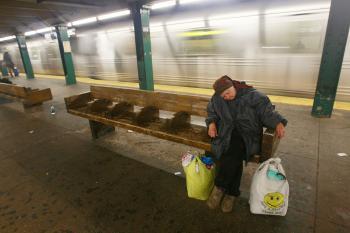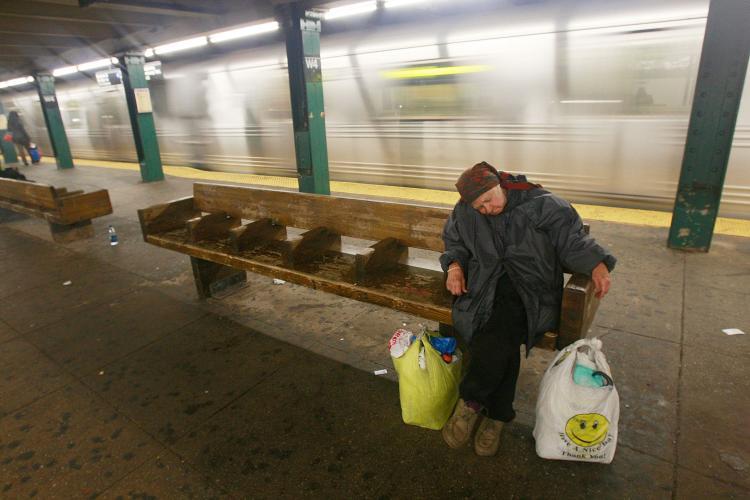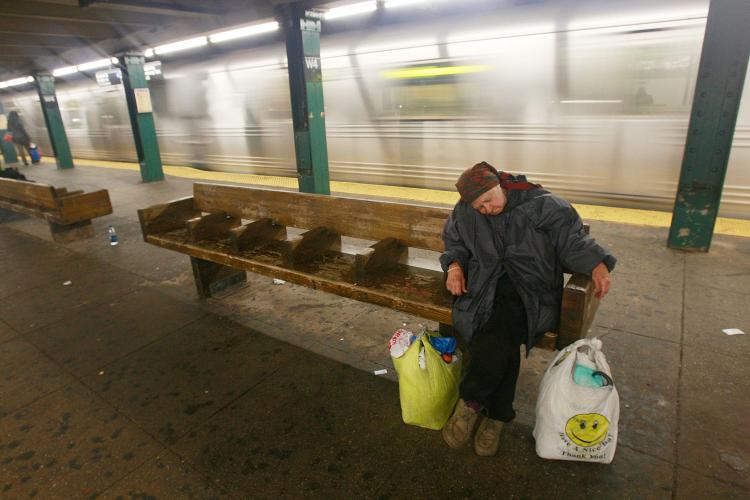NEW YORK—There’s a discrepancy between the reality of the state of poverty in New York City and the statistics released Tuesday by the U.S. Census Bureau, according to poverty advocates.
The official statistics show that while poverty in the United States increased from 13.0 percent in 2007 to 13.2 percent in 2008, New York City held steady moving from 18.5 percent in 2007 to 18.2 percent in 2008, said Linda Gibbs, deputy mayor for Health and Human Services.
Joel Berg, executive director of the NYC Coalition Against Hunger (NYCCAH), says that the apparent decrease posted for the borough of Manhattan is due to the fact that poor people have been moved out of that borough to others, in particular to the Bronx.
A recent analysis carried out by NYCCAH found that Mayor Bloomberg’s anti-poverty pilot programs, launched at the end of 2006, are at most helping 42,000 New Yorkers who live in poverty, or only 3 percent of the 1.5 million impoverished New Yorkers.
City residents wouldn’t be satisfied if anti-crime measures only protected “one out of every 33 blocks in the city,” said Berg.
Another discrepancy cited by the coalition is that “the 2008 poverty numbers would have been even higher had the survey included the skyrocketing numbers of homeless New Yorkers who are not, by design, counted by the census bureau.”
According to the Coalition for the Homeless, in 2008, nearly 110,000 New Yorkers slept in municipal shelters at some point, a 32 percent rise from six years ago.
These numbers and the census bureau statistics are from 2008 and do not account for increases in joblessness and poverty resulting from the recent recession.
New York Assembly Member Richard Gottfried said that the recession has had little impact on the city’s poorest. “When we say poverty we mean people who have so little that the coming of the recession, for many of them, didn’t make a dent in their lives. They don’t have enough to have benefited from the prosperity that came before the recession.”
Anti–poverty advocacy groups expect that the numbers today, given the economic downturn, would be significantly worse.
Cabrini Immigrant Services on the lower east side has run a food pantry for the last 10 years. It has 600 registered families with another 100 families on a waiting list. Director Christina Baal says that the newcomers are not only from the traditional groups.
“They are people from working families, not people who aren’t trying—they’re working long hours in difficult jobs,“ said Baal.
“The face of poverty is growing, including people working in jobs valued by our society who are not able to make ends meet for their families.”
The official statistics show that while poverty in the United States increased from 13.0 percent in 2007 to 13.2 percent in 2008, New York City held steady moving from 18.5 percent in 2007 to 18.2 percent in 2008, said Linda Gibbs, deputy mayor for Health and Human Services.
Joel Berg, executive director of the NYC Coalition Against Hunger (NYCCAH), says that the apparent decrease posted for the borough of Manhattan is due to the fact that poor people have been moved out of that borough to others, in particular to the Bronx.
A recent analysis carried out by NYCCAH found that Mayor Bloomberg’s anti-poverty pilot programs, launched at the end of 2006, are at most helping 42,000 New Yorkers who live in poverty, or only 3 percent of the 1.5 million impoverished New Yorkers.
City residents wouldn’t be satisfied if anti-crime measures only protected “one out of every 33 blocks in the city,” said Berg.
Another discrepancy cited by the coalition is that “the 2008 poverty numbers would have been even higher had the survey included the skyrocketing numbers of homeless New Yorkers who are not, by design, counted by the census bureau.”
According to the Coalition for the Homeless, in 2008, nearly 110,000 New Yorkers slept in municipal shelters at some point, a 32 percent rise from six years ago.
These numbers and the census bureau statistics are from 2008 and do not account for increases in joblessness and poverty resulting from the recent recession.
New York Assembly Member Richard Gottfried said that the recession has had little impact on the city’s poorest. “When we say poverty we mean people who have so little that the coming of the recession, for many of them, didn’t make a dent in their lives. They don’t have enough to have benefited from the prosperity that came before the recession.”
Anti–poverty advocacy groups expect that the numbers today, given the economic downturn, would be significantly worse.
Cabrini Immigrant Services on the lower east side has run a food pantry for the last 10 years. It has 600 registered families with another 100 families on a waiting list. Director Christina Baal says that the newcomers are not only from the traditional groups.
“They are people from working families, not people who aren’t trying—they’re working long hours in difficult jobs,“ said Baal.
“The face of poverty is growing, including people working in jobs valued by our society who are not able to make ends meet for their families.”





